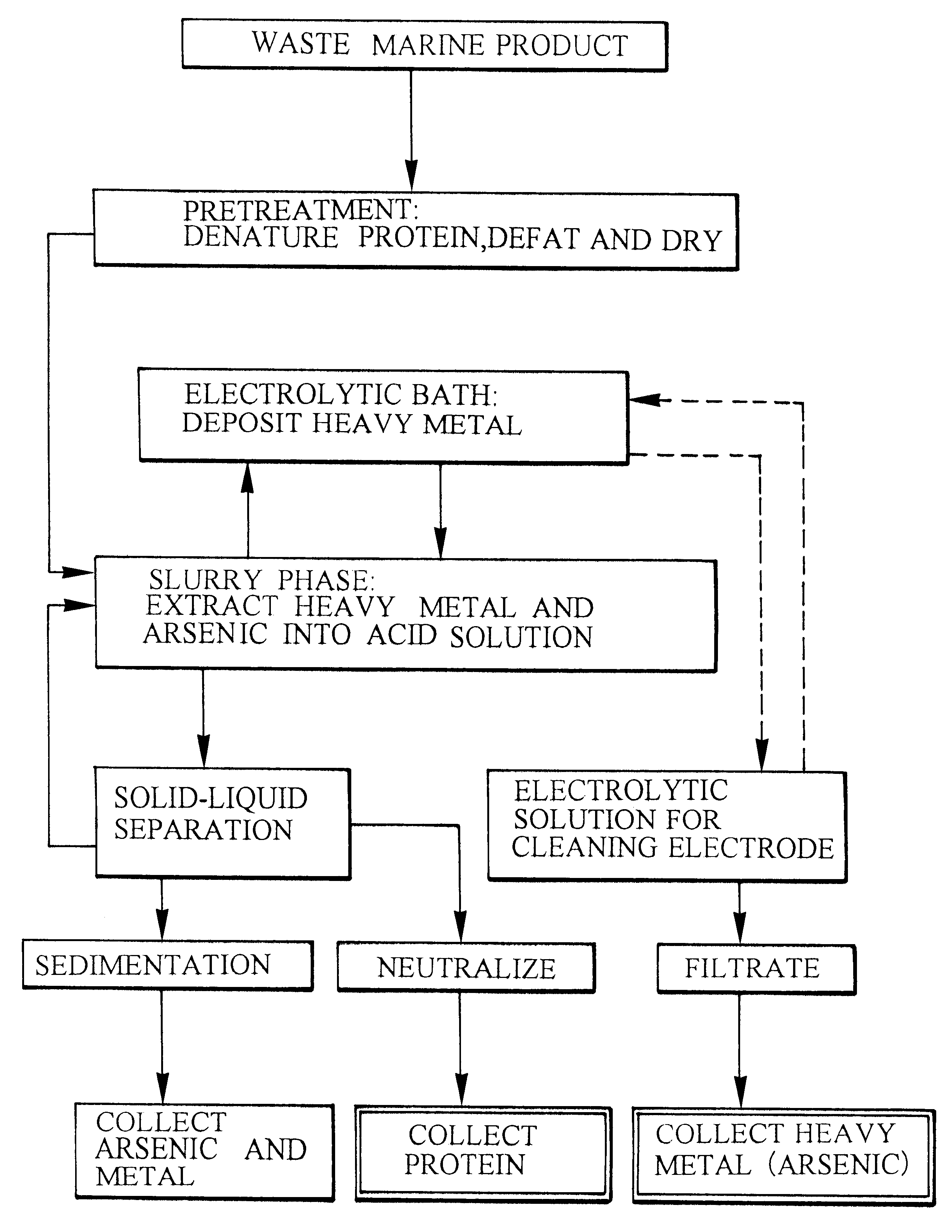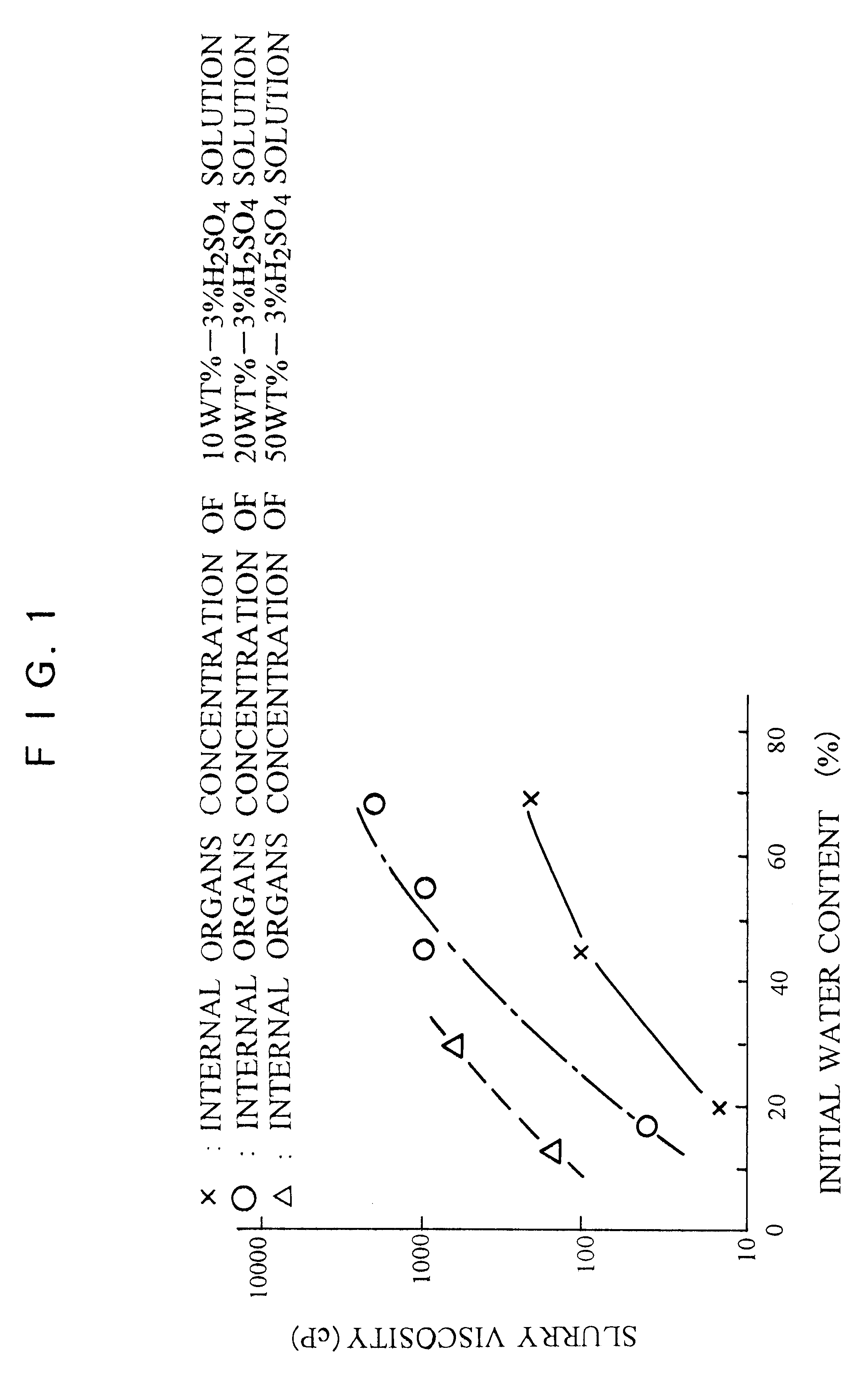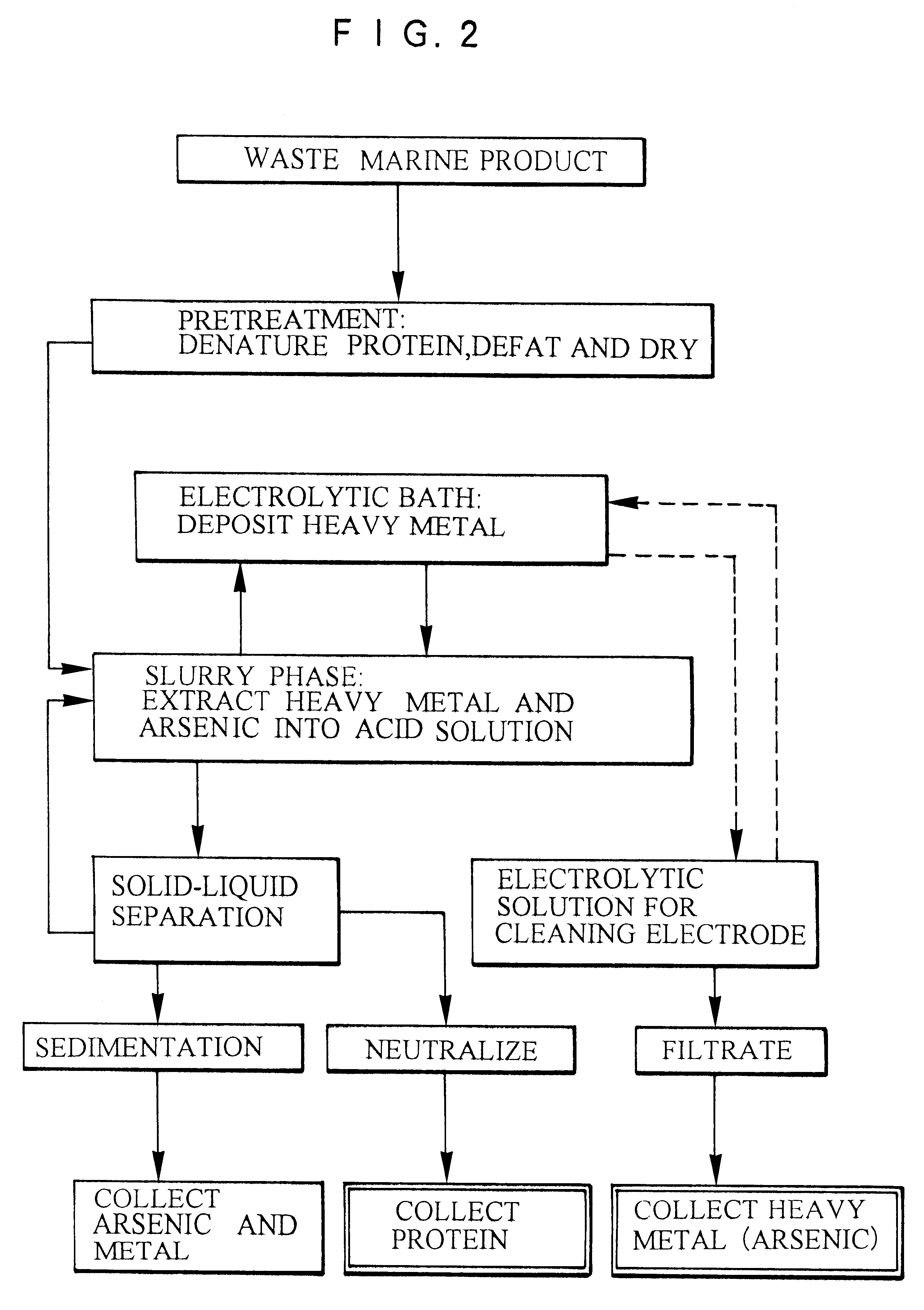Method and apparatus for removing toxic substances from waste marine products
a technology for toxic substances and marine products, applied in the direction of isotope separation, electrochemical methods for water/sewage treatment, water/sewage treatment by neutralisation, etc., can solve the problems of reducing the efficiency of heavy metal deposition, affecting the cleaning effect of electrodes, and affecting the removal effect of toxic wastes
- Summary
- Abstract
- Description
- Claims
- Application Information
AI Technical Summary
Benefits of technology
Problems solved by technology
Method used
Image
Examples
first example
The First Example
In the first example, an effect of the crude fat on the electrolytic deposition of the heavy metal is checked.
The raw internal organs of the scallops are broken, defatted and dried, and the protein in the internal organs is denatured to thereby produce powder of the waste marine products with the crude fat of 9.3% and 15%.
The raw material powder of 340 g (the raw internal organs of 1.8 kg) and the 3% sulfuric acid solution of 1500 ml are supplied to the electrolytic bath 11. While the air is aerated from below the electrodes so that the diameter of each bubble can be about 2 mm, the electrolysis is performed to deposit the heavy metal in a constant current electrolysis method with the cathode area being 1 dm.sup.2 and the electric current density being 1.5 A / dm.sup.2. In a comparative example, the electrolysis is performed under the same conditions except that the bubbles are not aerated from below the electrodes. SUS 316 is used as the material for the electrodes.
E...
second example
The Second Example
In the second example, the effects of the electrode cleaning are checked in the case that the electrolysis is performed continuously to deposit the heavy metal.
The results of the first example show that the cadmium concentration reaches the target of 5 mg / dried solid weight 1 kg in five hours if the air is aerated. Thus, in the second example, the electrolysis time for one batch of electrolysis in the electrolytic bath is set at five hours. The electrolysis from Run1-25 is performed with the raw material powder of 340 g with the crude fat of 8-13%. The cadmium concentration of the raw material powder before the electrolysis from Run 1 to Run 25 is about 90-150 mg / dried solid weight 1 kg.
FIG. 5 shows the results of Run1-25. The repetition of the electrolysis causes the cadmium concentration after the electrolysis to exceed the target of 5 mg / dried solid weight 1 kg from Run5 to Run7 after the removal performance starts deteriorating. Then, the acid solution in the e...
PUM
| Property | Measurement | Unit |
|---|---|---|
| water content | aaaaa | aaaaa |
| surface area | aaaaa | aaaaa |
| diameter | aaaaa | aaaaa |
Abstract
Description
Claims
Application Information
 Login to View More
Login to View More - R&D
- Intellectual Property
- Life Sciences
- Materials
- Tech Scout
- Unparalleled Data Quality
- Higher Quality Content
- 60% Fewer Hallucinations
Browse by: Latest US Patents, China's latest patents, Technical Efficacy Thesaurus, Application Domain, Technology Topic, Popular Technical Reports.
© 2025 PatSnap. All rights reserved.Legal|Privacy policy|Modern Slavery Act Transparency Statement|Sitemap|About US| Contact US: help@patsnap.com



